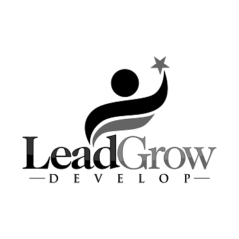Key Takeaways:
- Understand key strategies that enhance distribution business success.
- Learn how technology and logistics can enhance efficiency.
- Discover ways to develop and sustain strong vendor relationships.
- Explore the impact of industry trends on distribution.
Distribution businesses are a cornerstone of the global economy, functioning as the vital link between manufacturers and the market. Whether you’re looking to invest in a new venture or enhance an existing enterprise, understanding the strategies that drive success in distribution is essential.
The diversity within the distribution sector, from warehousing to logistics services, offers a myriad of opportunities for specialization and growth. Each segment has its unique challenges and requires tailored strategies to thrive. Adapting to these differentiated needs while focusing on core operational efficiencies can substantially affect a distribution business’s competitiveness and success.
The Importance of Efficient Logistics
The lifeblood of any distribution business is its logistics network. This complex system requires precision and coordination to ensure products are delivered promptly and intact. As logistics advances, tools such as advanced routing software and sophisticated inventory management systems have become indispensable. These technological advancements allow businesses to anticipate demand and manage stock levels proactively, minimizing the risk of overstocking or stockouts.
Opportunities abound in Florida’s dynamic landscape, and exploring available distribution businesses for sale could offer a lucrative entry into this sector. These businesses provide a steady revenue stream and contribute significantly to the supply chain, ensuring the seamless flow of goods from producers to consumers.
Leveraging Technology for Growth
In today’s digital age, technology catalyzes business growth, particularly distribution. Tools like Artificial Intelligence (AI) and data analytics have revolutionized companies’ operations, providing insights that drive strategic initiatives. For instance, harnessing big data can uncover patterns in customer behavior, enabling distributors to anticipate needs and tailor their service offerings accordingly.
Additionally, automation through robotics and software solutions reduces the likelihood of human error and boosts productivity. These technologies streamline operations and free up human resources to focus on more strategic roles, thus adding value. A well-documented case study on successful tech adoption in distribution highlights companies that have effectively integrated technological innovations, showcasing significant efficiency and market responsiveness advantages.
Building Strong Vendor Relationships
Cultivating strong vendor relationships is at the heart of a thriving distribution business. These partnerships are built on trust, transparency, and mutual benefit. By developing a reliable communication and performance history, businesses secure competitive pricing, favorable terms, and priority during shortages.
Vendors provide more than just products; they offer strategic insights into market trends and potential challenges. Regularly engaging with suppliers can unveil opportunities for collaboration and innovation, contributing to a more robust supply chain. This collaborative stance ensures that both parties are better equipped to meet evolving consumer demands.
Adapting to Market Changes
Flexibility and adaptability are key in the face of fluctuating market dynamics. Rapid consumer preferences, economic shifts, and technological advancements can all impact distribution businesses. Therefore, staying informed about industry developments is crucial, as they can impact operational and strategic planning.
One practical approach is to leverage data analytics to gain insights into market trends. This knowledge enables distributors to pivot swiftly and align their operations with current and future market needs. Moreover, staying up-to-date with technology advancements in logistics allows businesses to remain at the forefront of innovation, offering competitive advantages.
Environmental and Sustainability Considerations
Incorporating sustainable practices is an ethical responsibility and a strategic advantage in today’s conscientious marketplace. Reducing carbon footprints through green logistics, optimizing delivery routes, and minimizing waste are essential to an eco-friendly business strategy.
Embracing sustainability contributes to a positive brand image and resonates with eco-conscious consumers. Implementing these practices can also lead to cost savings, as efficient operations typically consume fewer resources, translating into lower operational costs without sacrificing quality or service.
Financial Management in Distribution
Sound financial management is the bedrock of any thriving business. Maintaining healthy cash flow and profit margins for distribution sectors is critical to sustainability and growth. Implementing robust accounting procedures and financial analytics can provide insights into cost-saving opportunities.
Moreover, careful financial planning involves risk management and preparing for economic downturns and unexpected market shifts. Businesses can ensure operational flexibility and long-term success by clearly focusing on financial health.
Conclusion
Navigating the distribution business landscape requires a comprehensive approach integrating logistics efficiency, technological innovation, strong vendor relationships, and adaptation to market changes. By prioritizing these strategies, businesses can position themselves for operational success and sustainable growth in a competitive industry.

